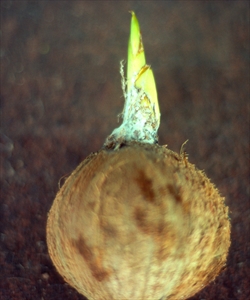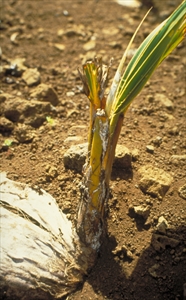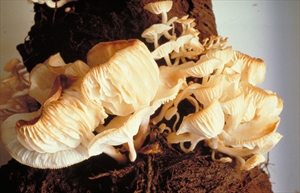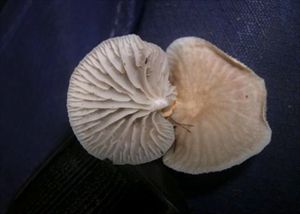- Widespread distribution. In South America, north Africa, Oceania. On coconut, banana, taro and weeds, causing minor diseases. It is also reported as a sheath rot disease of maize, and a crown rot of rice, but not in the Pacific. Occasionally important.
- The fungus also causes taro corm rots and sheath rots on banana and maize. Spores enter the calyx end of seednuts while still attached to the palm, infecting the embryo as it germinates. Later, the fungus grows on the shoot or enters the nut cavity destroying the contents.
- In the nursery, toadstools form on the germinated and dead seednuts. In Samoa, losses in Malayan Dwarf are about 50%.
- Cultural control: local tall varieties are tolerant (Samoa and Solomon Islands); those with Malayan Dwarf as female parent are very susceptible (Samoa).
- Chemical control: none recommended; post-harvest fungicides found to be ineffective.













